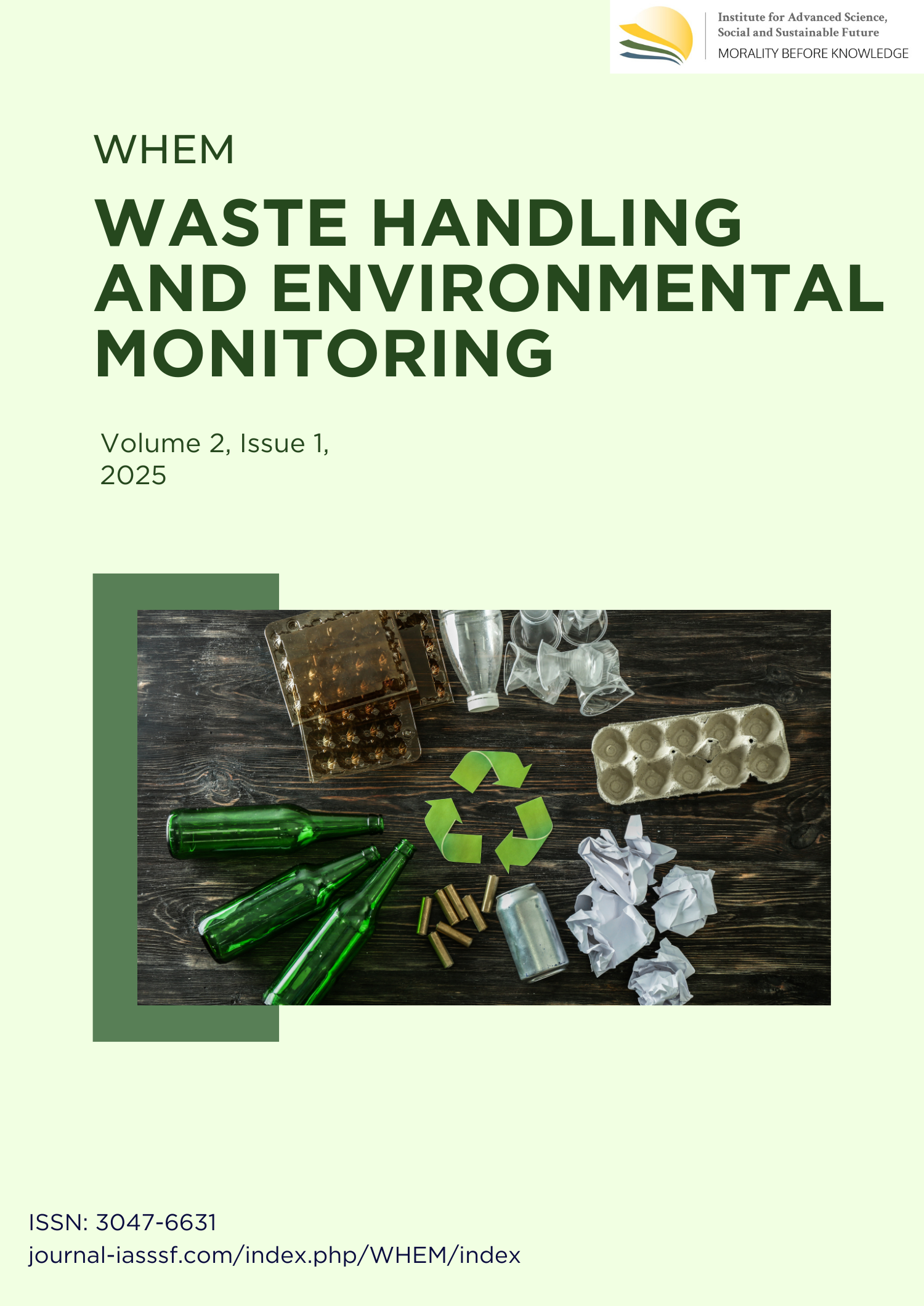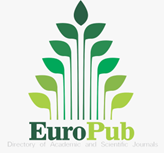Utilization of used lubricating oil for anfo-emulsion production: A study on blasting activities in the copper mining area
DOI:
https://doi.org/10.61511/whem.v2i1.2025.1702Keywords:
used lubricating oil utilization, ANFO-emulsion, sustainable miningAbstract
Background: Copper is crucial for the development of electric vehicles and renewable energy technologies. In Indonesia, PT ABC's open-pit mining operations are expanding, leading to increased waste generation, particularly used lubricating oil, which is contaminated with water and metal particles but has caloric value comparable to diesel. This study explores the potential of using this oil as a diesel substitute in explosives, focusing on economic and environmental benefits. Method: The study used data collection methods to measure the annual volume of waste oil, cost savings from using it as a fuel substitute, and compliance with hazardous waste utilization regulations. The research analyzed the impact of substituting up to 80% of diesel fuel requirements with used lubricating oil. Findings: PT ABC utilizes approximately 2,699,850 liters of used lubricating oil annually. The company achieves a 99.99% compliance rate with hazardous waste permits. Substituting up to 80% of diesel with used oil resulted in an economic gain of IDR 38,885,321,437 in 2023 and diesel procurement savings of IDR 2,473,012,791. These findings highlight the economic and environmental advantages of waste management practices in mining operations. Conclusion: The integration of used lubricating oil as an alternative fuel in mining operations reduces operational costs, enhances environmental sustainability, and aligns with circular economy principles. This approach contributes to sustainable mining practices by transforming waste into reusable resources, offering significant economic and environmental benefits. Novelty/Originality of this article: This study is original in demonstrating the use of used lubricating oil as a substitute for diesel fuel in mining, showing its potential to reduce costs, improve sustainability, and support circular economy practices in the mining sector.
References
Ahmadi, F., & Toghyani, S. (2011). The role of urban planning in achieving sustainable urban development. OIDA International Journal of Sustainable Development, 2(11), 23-26. https://papers.ssrn.com/sol3/papers.cfm?abstract_id=1980454
Appendix XIII Regulation of the Minister of Environment and Forestry Number 6 of 2021. (2021). Peraturan Menteri Lingkungan Hidup dan Kehutanan Republik Indonesia Nomor 6 Tahun 2021 tentang Tata Caraa dan Persyaratan Pengelolaan Limbah Bahan Berbahaya dan Beracun. https://peraturan.bpk.go.id/Details/211000/permen-lhk-no-6-tahun-2021
Appendix IX of Government Regulation Number 22 of 2021. (2021). Peraturan Pemerintah Nomor 22 Tahun 2021 tentang Pedoman Perlindungan dan Pengelolaan Lingkungan Hidup. In Peraturan Pemerintah Nomor 22 Tahun 2021 tentang Penyelenggaraan Perlindungan dan Pengelolaan Lingkungan Hidup. https://peraturan.bpk.go.id/Details/161852/pp-no-22-tahun-2021
Asmiani, N., Widodo, S., & Sibali, M. G. D. (2016). Efektifitas pengeboran kedalaman bor rata-rata. Jurnal Geomine, 4(2), 80–82. https://doi.org/10.33536/jg.v4i2.57
Bandh, S. A., Malla, F. A., Wani, S. A., & Hoang, A. T. (2023). Waste management and circular economy. In Waste management in the circular economy (pp. 1–17). Springer International Publishing. https://doi.org/10.1007/978-3-031-42426-7_1
BSN. (2010a). SNI 7571:2010 tentang Baku Tingkat Getaran Pada Kegiatan Tambang Terbuka Terhadap Bangunan. Badan Standarisasi Nasional.
BSN. (2010b). SNI 7642:2010 tentang Tata Cara Pemanfaatan Oli Bekas untuk Campuran Amonium Nitrat dengan Fuel Oil pada Tambang Terbuka. Badan Standarisasi Nasional.
Buirski, D. (2005). Market overview. In Textiles in sport (pp. 15–24). Woodhead Publishing. https://doi.org/10.1533/9781845690885.1.15
Dotto, M. S., & Pourrahimian, Y. (2024). The influence of explosive and rock Mass properties on blast damage in a single-hole blasting. Mining, 4(1), 168-188. https://doi.org/10.3390/mining4010011
Fyffe, J. R., Breckel, A. C., Townsend, A. K., & Webber, M. E. (2016). Use of MRF residue as alternative fuel in cement production. Waste Management, 47, 276-284. https://doi.org/10.1016/j.wasman.2015.05.038
Geissdoerfer, M., Savaget, P., Bocken, N. M., & Hultink, E. J. (2017). The Circular Economy–A new sustainability paradigm?. Journal of cleaner production, 143, 757-768. https://doi.org/10.1016/j.jclepro.2016.12.048
Hajam, Y. A., Kumar, R., & Kumar, A. (2023). Environmental waste management strategies and vermi transformation for sustainable development. Environmental Challenges, 13, 100747. https://doi.org/10.1016/j.envc.2023.100747
Hourcade, J. C., Ambrosi, P., & Dumas, P. (2009). Beyond the Stern Review: Lessons from a risky venture at the limits of the cost–benefit analysis. Ecological Economics, 68(10), 2479-2484. http://dx.doi.org/10.1016/j.ecolecon.2009.04.011
International Council on Mining and Metals. (2024). Our Principles. FutureLearn. https://www.futurelearn.com/about/our-principles
Kalisz, S., Kibort, K., Mioduska, J., Lieder, M., & Małachowska, A. (2022). Waste management in the mining industry of metals ores, coal, oil and natural gas - A review. Journal of Environmental Management, 304, 114239. https://doi.org/j.jenvman.2021.114239
Kookos, I. K., Pontikes, Y., Angelopoulos, G. N., & Lyberatos, G. (2011). Classical and alternative fuel mix optimization in cement production using mathematical programming. Fuel, 90(3), 1277–1284. https://doi.org/10.1016/j.fuel.2010.12.016
Kumar, A., Thakur, A. K., Gaurav, G. K., Klemeš, J. J., Sandhwar, V. K., Pant, K. K., & Kumar, R. (2023). A critical review on sustainable hazardous waste management strategies: a step towards a circular economy. Environmental Science and Pollution Research, 30(48), 105030–105055. https://doi.org/10.1007/s11356-023-29511-8
Ministry of Energy and Mineral Resources. (2020). Booklet Tambang Tembaga 2020. https://www.esdm.go.id/id/booklet/booklet-tambang-tembaga-2020
Ministry of Environment and Forestry. (2024). Sistem Pelaporan dan Evaluasi Digital (SPEED) (Vol. 3). https://www.transporter.nonferindoutama.com/artikel/mengenal-speed-2024-klhk-sistem-pelaporan-dan-evaluasi-digital-pengganti-siraja-2024
Ministry of Industry. (2015). Rencana Induk Pembangunan Industri Nasional 2015 - 2035.
Moorthy, N. T., Hamdan, H. H., & Phang, C. C. (2012). Identification of fuel oil in absorbent and non-absorbent surfaces in a site of ammonium nitrate-fuel oil (ANFO) blast. Malaysian Journal of Forensic Sciences, 3(1), 26–35. https://www.forensics.org.my/mjofs/volume3no1.php
Nazario, B. C., Technical, S., & Advisor, S. (2024). Oil monitoring and used oil analysis: Best practices for Read the Expert Q & A HYDREX™ AW Technical Experts at Work for You. HYDREX. https://www.hydrex.com/oil-monitoring-and-used-oil-analysis-best-practices-for-read-the-expert-q-a-hydrex-tm-aw-technical-experts-at-work-for-you
Onifade, M., Zvarivadza, T., Adebisi, J. A., Said, K. O., Dayo-Olupona, O., Lawal, A. I., & Khandelwal, M. (2024). Advancing toward sustainability: The emergence of green mining technologies and practices. Green and Smart Mining Engineering, 1(2), 157–174. https://doi.org/10.1016/j.gsme.2024.05.005
Oxley, J. C., Smith, J. L., Rogers, E., & Yu, M. (2002). Ammonium nitrate: Thermal stability and explosivity modifiers. Thermochimica Acta, 384(1–2), 23–45. https://doi.org/10.1016/S0040-6031(01)00775-4
Pearce, D. W., & Turner, R. K. (1989). Economics of natural resources and the environment. Johns Hopkins University Press.
Pinheiro, C. T., Quina, M. J., & Gando-Ferreira, L. M. (2021). Management of waste lubricant oil in Europe: A circular economy approach. Critical Reviews in Environmental Science and Technology, 51(18), 2015–2050. https://doi.org/10.1080/10643389.2020.1771887
PT ABC. (2023). Laporan RKL-RPL PT ABC.
Saeidi-Mobarakeh, Z., Tavakkoli-Moghaddam, R., Navabakhsh, M., & Amoozad-Khalili, H. (2020). A bi-level and robust optimization-based framework for a hazardous waste management problem: A real-world application. Journal of Cleaner Production, 252, 119830. https://doi.org/10.1016/j.jclepro.2019.119830
Safdar, N., Khalid, R., Ahmed, W., & Imran, M. (2020). Reverse logistics network design of e-waste management under the triple bottom line approach. Journal of Cleaner Production, 272, 122662. https://doi.org/10.1016/j.jclepro.2020.122662
Subowo, G. (2011). Penambangan sistem terbuka ramah lingkungan dan upaya reklamasi pasca tambang untuk memperbaiki kualitas sumberdaya lahan dan hayati tanah. Jurnal Sumberdaya Lahan, 5(2), 83–94. https://doi.org/10.21001/jsl.v5i2.132706
Terhune, B. (2023, February 14). CostMine: Yes, costs have risen. Canadian Mining Journal. https://www.canadianminingjournal.com/featured-article/costmine-yes-costs-have-risen/
Tresnadi, H. (2014). Perkembangan industri tembaga global sebagai masukan untuk pengembangan industri tembaga nasional. Prosiding Temu Profesi Tahunan (TPT) XXIII Perhimpunan Ahli Pertambangan Indonesia (PERHAPI), 162. https://123dok.com/document/ydmjr5jy-temu-profesi-tahunan-tpt-xxiii-perhapi-makassar-november.html
U.S. Geological Survey. (2024). Mineral commodity summaries 2024: Copper. U.S. Geological Survey. https://doi.org/10.3133/sir20185160
Yuni, D. N., Makhetha, L. S., & Lelimo, S. (2023). Analyzing the relationship between Industrialization and economic growth in Lesotho. Cogent Economics and Finance, 11(2). https://doi.org/10.1080/23322039.2023.2285620
Downloads
Published
How to Cite
Issue
Section
Citation Check
License
Copyright (c) 2025 Intan Suci Wulandari

This work is licensed under a Creative Commons Attribution 4.0 International License.

















